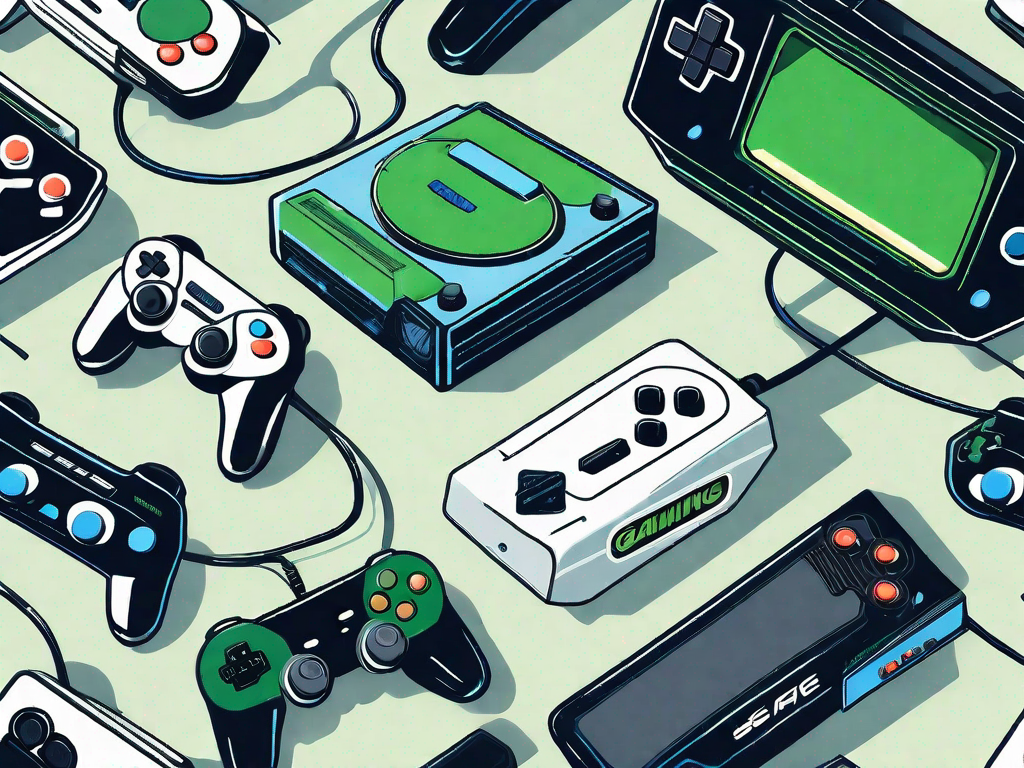Remember the joy of playing retro video games? The feeling of holding that clunky controller, blowing into dusty cartridges, and entering pixelated worlds that sparked our imaginations. Retro gaming consoles provided a gateway to simpler times, when gaming was about pure fun and exploration. But can these nostalgic devices coexist with modern technology? In this article, we will delve into the allure of retro gaming, explore the evolution of gaming consoles, discuss the intersection of retro and modern gaming, and take a peek into the future of this beloved hobby.
Understanding the Allure of Retro Gaming
Why do so many gamers hold on to their retro consoles? The answer lies in the undeniable power of nostalgia. Nostalgia is a funny thing; it has the ability to transport us back to our childhoods, evoking strong emotions and fond memories. For gamers, retro consoles embody a simpler era when gaming was a communal activity, shared with friends huddled around a small screen. The moment we fire up these consoles, we are instantly transported back to a time of joy and excitement.
The Psychology of Nostalgia in Gaming
Nostalgia’s effect on our brain is fascinating. Researchers have discovered that engaging in nostalgic activities, such as playing retro games, triggers the release of feel-good chemicals like dopamine and oxytocin. It allows us to relive positive experiences from the past, providing a temporary escape from the stresses of modern life. In a world that seems to move at an ever-increasing pace, retro gaming consoles provide a sanctuary where we can slow down and reconnect with our inner child.
The Enduring Popularity of Classic Games
One could argue that the appeal of retro gaming extends beyond nostalgia alone. Classic games have stood the test of time because they offer engaging gameplay and imaginative storytelling that still resonate with players today. From iconic characters like Mario and Sonic to legendary titles like The Legend of Zelda and Final Fantasy, these games continue to captivate new generations of players. The simplicity of these games coupled with their timeless charm explain why retro gaming consoles remain popular even in the age of cutting-edge technology.
The Evolution of Gaming Consoles
The rise of retro gaming consoles is closely intertwined with the evolution of gaming technology. It all started with arcade machines that mesmerized players with their addictive gameplay and flashy graphics. As technology progressed, gaming consoles entered our living rooms, revolutionizing the way we experienced games. From the iconic Atari to the legendary Nintendo Entertainment System, each console brought new possibilities and expanded the realms of interactive entertainment.
From Arcade to Home Entertainment
Arcades brought gaming into public spaces, filling dimly lit rooms with glowing screens and the sounds of blasting lasers. They offered an immersive experience, allowing players to challenge each other and compete for high scores. However, home consoles changed the landscape entirely. Suddenly, families could bring the arcade experience home, gathering around a television set to enjoy gaming together. This shift from public to private gaming turned gaming into a shared experience, fostering social connections among players of all ages.
The Impact of Technological Advancements
Technological advancements propelled gaming consoles to new heights. The introduction of 16-bit consoles like the Super Nintendo and Sega Genesis brought about a graphical revolution, enhancing the visual experience of games. Fast forward to the present, and we have modern consoles capable of rendering lifelike graphics and supporting virtual reality experiences. As technology continues to evolve, retro gaming consoles have adapted to incorporate modern features, allowing us to enjoy the best of both worlds.
The Intersection of Retro and Modern Gaming
While retro gaming consoles honor the past, they also embrace the present. Developers have realized the market’s appetite for nostalgia and have remastered classic games for modern consoles. These enhanced versions retain the charm of the originals while leveraging modern hardware to deliver improved graphics and gameplay. This remastering process breathes new life into beloved titles, allowing old and new players alike to experience these classics in a whole new way.
Remastered Classics for Modern Consoles
From the iconic Super Mario 3D All-Stars collection to the remastered versions of Crash Bandicoot and Spyro the Dragon, modern consoles have become gateways to classic gaming experiences. These remastered editions not only appeal to long-time fans but also introduce new players to the magic of retro gaming. By bridging the gap between the past and the present, remastered classics ensure that the legacy of these timeless games endures for generations to come.
Emulators and the Digitalization of Retro Games
Another way retro gaming has entered the modern era is through emulators and digital platforms. Emulators allow gamers to recreate the experience of playing retro games on modern devices. With emulators, players can relive their favorite childhood games without the need for physical cartridges or consoles. Digital platforms like the Nintendo Switch’s Virtual Console or online stores offer a wide range of retro games for instant download. These platforms make it easier than ever to explore the vast library of classic games.
The Future of Retro Gaming
As technology continues to push boundaries, the future of retro gaming is ripe with excitement and possibilities. One area that holds immense potential is virtual reality (VR). Imagine stepping into a virtual arcade, surrounded by your favorite games from the past. VR has the power to transport us into immersive worlds, allowing us to relive the magic of retro gaming in a whole new dimension.
The Role of Virtual Reality in Retro Gaming
Virtual reality headsets have come a long way since their inception. With advancements in hardware and software, VR is becoming increasingly accessible to the masses. While the technology is still in its infancy, developers are exploring ways to bring retro gaming to the virtual realm. Imagine strapping on a VR headset, grabbing the virtual controller, and diving into a nostalgic world filled with classic games. Virtual reality has the potential to revolutionize retro gaming, offering an even more immersive and interactive experience.
The Potential of Cloud Gaming for Classic Games
Another exciting development in the gaming industry is cloud gaming. Cloud gaming services allow players to stream games directly to their devices without the need for powerful hardware. This technology opens up possibilities for retro gaming, as classic titles can be accessed instantly without the need for physical consoles or cartridges. The digital nature of cloud gaming makes it easier than ever to preserve and share retro gaming experiences, ensuring that these beloved games continue to be enjoyed by future generations.
In conclusion, retro gaming consoles prove that nostalgia can coexist with modern technology. These devices tap into our longing for simpler times while embracing the advancements that have shaped the gaming industry. The enduring popularity of classic games, the evolution of gaming consoles, the intersection of retro and modern gaming, and the exciting future of the hobby all demonstrate that retro gaming is here to stay. So, dust off that retro console, grab your favorite game, and embark on a journey through time, where nostalgia meets modern tech.


